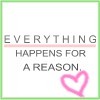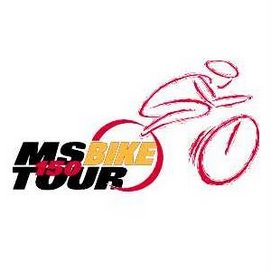Saturday, March 22, 2008
Tuesday, March 18, 2008
6 things that resemble the Death Star
It’s a simple shape, a sphere with a concave dish set in the surface. In 1977, the shape was forever linked to the movie Star Wars and is known as the Death Star. In the movie, it was a space station as large as a natural moon that housed the “ultimate weapon”, a planet-destroying laser.
1. Hotel Full Moon

The Hotel Full Moon in Baku, Azerbaijan is a design from Heerim Architects of Korea, to be built on a peninsula overlooking Full Moon Bay. The luxury hotel will have 382 rooms in its 35 stories. Another hotel on the bay will be called Hotel Crescent, also with a shape to follow its name.
That’s only the most recent example. Keep reading for others.
2. Convention Center Near Dubai

The RAK Convention and Exhibition Center in the new city of Ras al Khaimah, UAE looks very much like the Death Star. A project still in the concept stage from the Office for Metropolitan Architecture, the design is the result of a competition. The project team is led by Dutch architect Rem Koolhaas, who also designed the CCTV building in Beijing. The building will hold hotels, offices, restaurants, and stores as well as a convention hall. See more pictures here.
3. Belarus National Library

The Belarus National Library moved into a new building in 2006. It’s not spherical; the shape is a rhombicuboctahedron (try saying that three times fast). During the day, the 24 sides sparkle with glass panels. At night, they are illuminated by 4646 color-changing LEDs. The Minsk building is imposing and not without controversy. It has been referred to as the Death Star both because of the way it looks and how it was financed.
4. AT&T Logo

AT&T’s world globe logo was designed by Saul Bass in 1984, replacing the phone logo that had been in use for nearly 100 years. This came about because of the forced breakup of Ma Bell into seven regional “baby bells”. SBC Communications bought AT&T in 2005, and a new, slightly different logo was unveiled. The newest one hides the classic death star spot somewhat better, but some can still see the Evil Empire in the logo.
5. Panapet

The distinctive shape of the Death Star was around before Star Wars. It’s possible that George Lucas, or some of the other creative minds behind Star Wars owned a Panasonic R-70 transistor radio, marketed as the Panapet. Very likely, in fact, since it seemed everyone had one. They were produced in the early 70s.
6. Mimas

The most amazing similacrum of the Death Star is Mimas, one of the inner moons of Saturn. It has an 80-mile-wide crater named Herschel, which looks like it could easily focus a superlaser. The uncanny resemblence is coincidental, as Star Wars was made several years before the first photographs of Mimas with its crater were taken.
If you love the shape, and don’t want to travel to Dubai, or Minsk, or Saturn, you can build your own Death Star with a Lego kit -or just watch someone else do it.The Story behind the Cereal
The Stories Behind Your Favorite Cereal Mascots
By Nick Hansen

Everyone remembers the wonderful Saturday morning ritual of diving into multiple bowls of sugared cereal while watching hours of cartoons. (Some of us haven’t moved on yet.) Cereal cartoons are one of the largest and most successful advertising trends in history. I still sympathize with the Trix Rabbit for not being able to enjoy a bowl of his fruit-shaped cereal. Here are the stories behind the characters that successfully motivated us to beg our parents to purchase their sugary products.
Horatio Crunch — Cap’n Crunch

One of the grossest things about cold cereal is when it gets too soggy and turns mushy. Captain Horatio P. Crunch was born in response to a survey kids that said they hated soggy cereal. Jay Ward (above) drew the captain and, according to his daughter, based the cartoon on himself. The honorable captain was charged with guarding the Crunch from the evil barefoot pirate Jean Le-Foote. The Captain has protected his cereal from the menace of sogginess so well that there was a movement to promote him to the rank of Admiral. If you look closely at the early commercials, they look familiar to other cartoons of the day. That’s because Jay Ward also animated other popular TV shows like Rocky and Bullwinkle, Dudley Do-Right and George of the Jungle.
Can you see the resemblance?
Snap, Crackle and Pop — Rice Krispies

Rice Krispies had the distinction of being a cereal you could hear. A jingle for the noisy cereal inspired illustrator Vernon Grant to create the characters Snap, Crackle, and Pop:
“Listen to the fairy song of health, the merry chorus sung by Kellogg’s® Rice Krispies® as they merrily snap, crackle, and pop in a bowl of milk. If you’ve never heard food talking, now is your chance.”
Grant’s flair for fantasy caused him to draw the three characters as gnomes. Snap was the first gnome and appeared in a few solo ads before his brothers came along. When they first started appearing in 1939 they fought against their rivals Soggy, Mushy and Toughy for the hearts (and bowls) of the children. Once the television ads began to be seen by a larger and younger audience, Kellogg’s decided to modernize the three and make them more human-like. Snap, Crackle and Pop are now the longest-running cereal advertising campaign in history.
The Rabbit — Trix

Before he was animated, the Trix rabbit was a hand puppet. The original tagline for the cereal was “I’m a rabbit and rabbits are supposed to like carrots. But I hate carrots. I like Trix.” Catchy, isn’t it? General Mills knew that television was the best way to advertise to kids and they decided to spend 97 percent of their advertising budget on commercials. It paid off: the “Silly Rabbit” campaign was a hit. By 1976, General Mills was worried it was sending the wrong message to kids by having the rabbit always fall short of his aspiration. They decided to do the American thing and let the kids vote whether the rabbit should get a bowl. The Rabbit’s campaign was so successful that more than 99 percent kids voted to let the rabbit have a bowl. The Rabbit has succeed in grabbing bites here and there, but he hasn’t had a full bowl since 1980. And as you can see, it is probably a good thing because it seems to have some sort of weirdly stimulating effect on him.
Tony the Tiger — Frosted Flakes

Cartoon spokescharacters were all the rage in the 1950s. The Kellogg Company wanted an animal to advertise its new Sugar Frosted Flakes to appeal to the younger generation while reassuring mothers that it was OK to let their kids eat a sugared cereal for breakfast. The Leo Burnett advertising agency came up with four different choices: Tony the Tiger, Katy the Kangaroo, Elmo the Elephant and Newt the Gnu. The agency could not decide between a kangaroo or a tiger, but the marsupial was sacked when the feline outsold her by huge margins. The tiger concept was so successful that Kellogg’s sued Exxon Mobile for their use of a tiger in their advertisements.
When Tony first appeared on cereal boxes, advertising critic James D. Wolf said, “I am very fond of breakfast cereals, but a tiger fails to give me a hankering.” Evidently he didn’t realize how “great” Tony would become. If Tony’s singing voice sounds familiar it’s because his voice actor Thurl Ravenscroft also sang “You’re a mean one Mr. Grinch” for the Grinch cartoon. [Stacy’s Note: He also sang one of the ‘Grim Grinning Ghosts’ parts in the Haunted Mansion at Disneyworld.] Tony’s son also had a short lived spinoff cereal called Frosted Rice.
Lucky — Lucky Charms

The concept of marshmallows in a bowl (or “marbits,” as General Mills called them) was easily appealing to kids, but a much harder sell for parents. Lucky was spawned from a concept to base the marshmallows around a charm bracelet. Lucky was replaced for a time in the 1970’s by Waldo the Wizard, but the leprechaun came back within a year. The marbits continued to evolve due to increased product sales every time a new one was added. Lucky’s original charm bracelet included yellow moons and stars, but now are blue moons and shooting stars. Kids could not resist trying to catch Lucky to get his marshmallow-filled cereal. Fortunately, Lucky provided the secret… go to the store and buy a box. Arthur Anderson supplied Lucky’s voice for 29 years, but surprisingly he’s not Irish.






